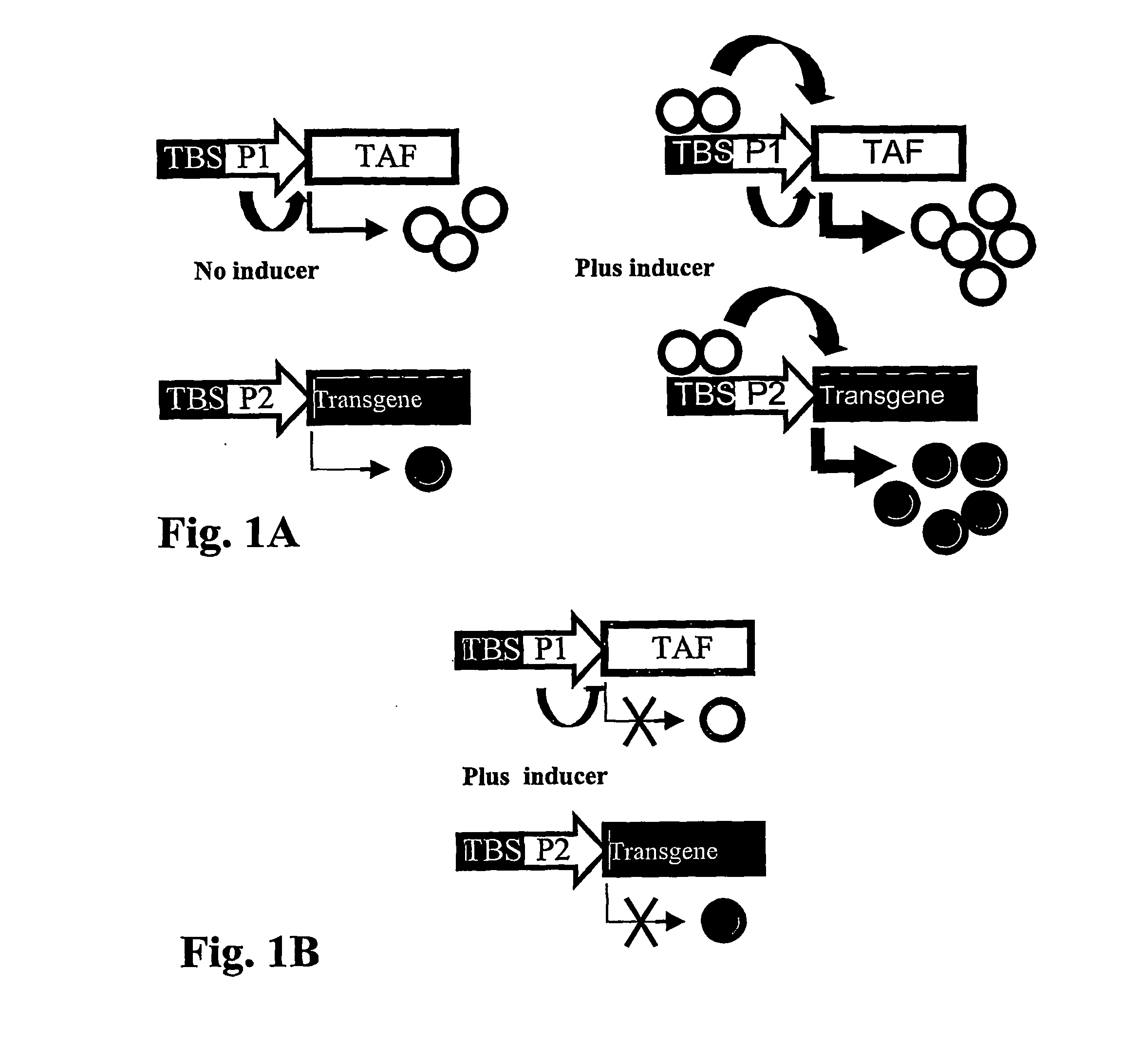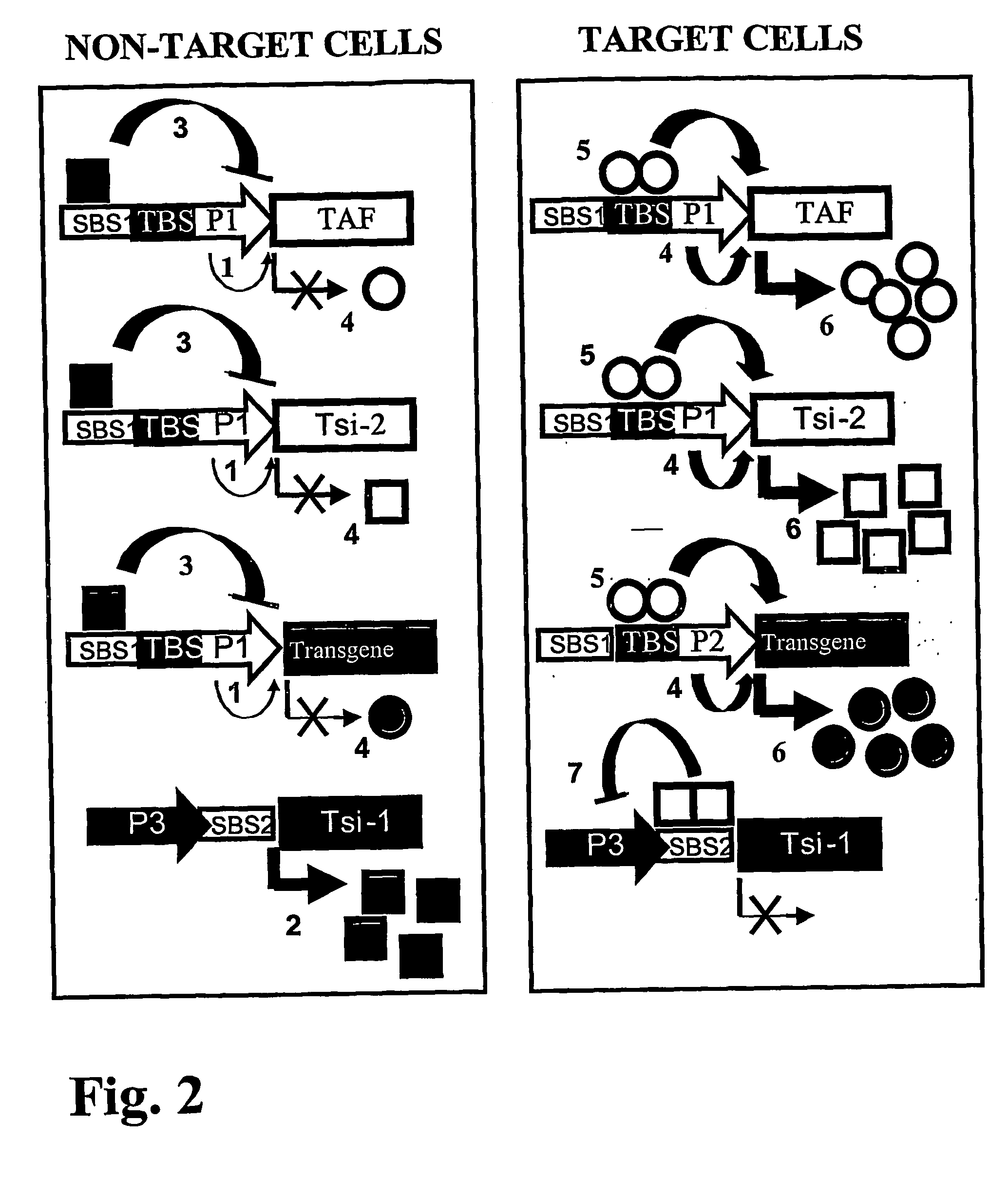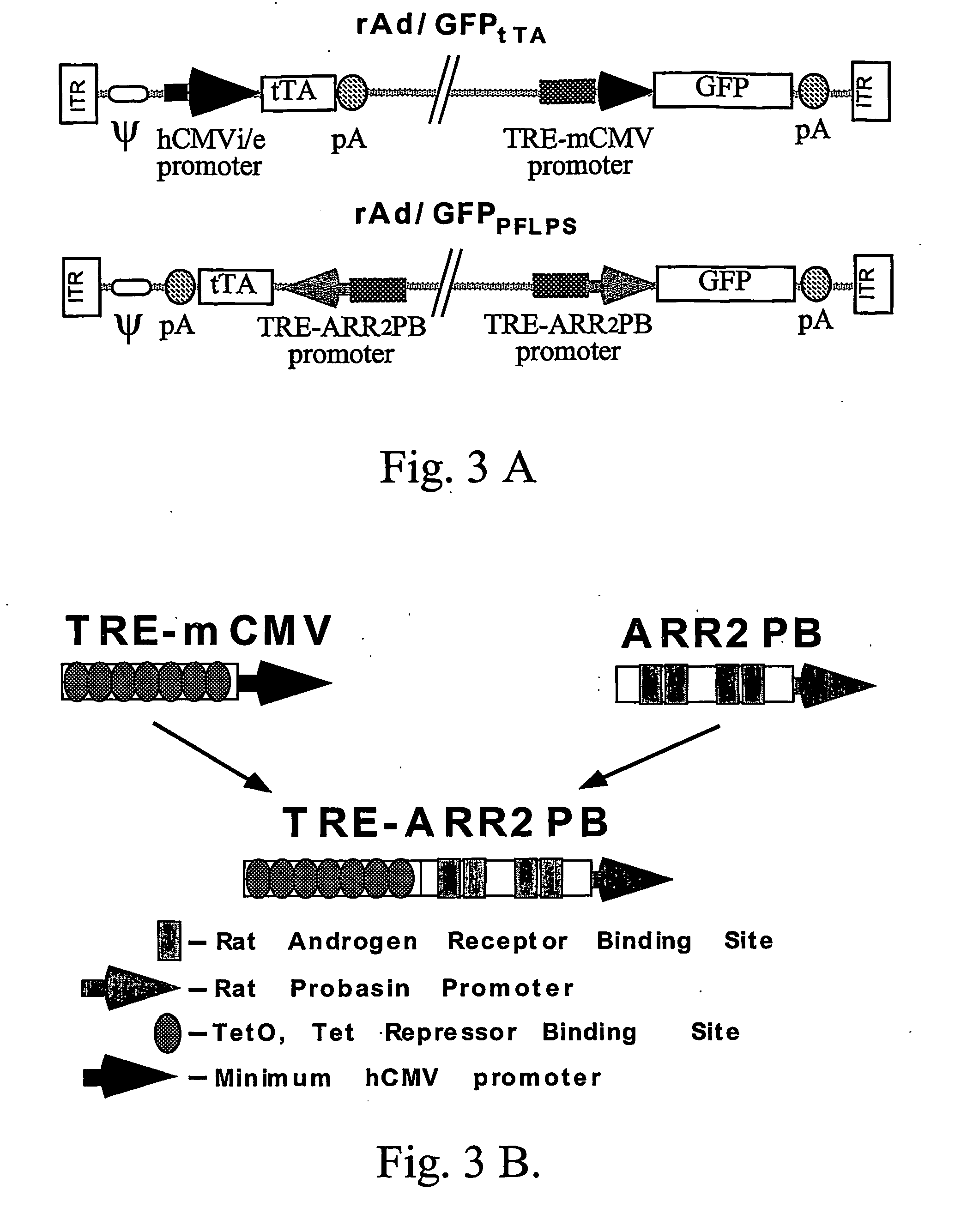Autologous upregulation mechanism allowing optimized cell type-specific and regulated gene expression cells
a gene expression and autologous upregulation technology, applied in the field of molecular biology and gene therapy, can solve the problems of not all localized prostate cancer cases can be treated by traditional local curative approaches, temporary to permanent complications, and not all cases of local disease can be treated
- Summary
- Abstract
- Description
- Claims
- Application Information
AI Technical Summary
Benefits of technology
Problems solved by technology
Method used
Image
Examples
example 1
Materials and Methods
[0247] Cell Lines.
[0248] HEK293 (human embryonic kidney), LNCaP (human prostate cancer) and 22RV1 (mouse prostate cancer) cells were obtained from American Type Culture Collection (ATCC; Manassas, Va.). U343MG and U251MG (brain tumor) cell lines were obtained from the Brain Tumor Research Center Tissue Bank (Dept. of Neurological Surgery, UCSF, San Francisco, Calif.). All cell lines were maintained in media supplemented with 10% cosmic calf serum (CCS; HyClone, Logan, Utah), with HEK293 being maintained in DMEM, LNCaP and 22RV1 being maintained in RPMI, and U343MG and U251MG being maintained in MEM.
[0249] Construction of Plasmid Vectors.
[0250] The pUHD10-3 (containing the TRE promoter) and pUHD15-1 (containing the tTA gene) were generously provided by Hermann Bujard (Center for Molecular Biology, University of Heidelberg, Heidelberg, Germany). The ARR2PB (0.45 kb) promoter was developed in the laboratory of Robert J. Matusik (Department of Cell Biology, Vand...
example 2
Tissue Specific Expression
[0261] The goal was to construct a complex adenovirus-based (rAd) vector capable of generating high expression levels of a pro-apoptotic FasL protein in prostate-derived cells but not in the cells of other origins. Previous studies indicated that high expression of FasL in prostate cancer cells could be achieved using a rAd vector delivering that gene under the control of tet-inducible system, and that this high expression was effective in eliciting apoptosis in those cells. Hyer et al., (2000). At the same time, the inventors were interested in increasing the safety of our therapy by transcriptionally restricting FasL expression to prostate cancer cells by using a synthetic promoter (ARR2PB) based on rat probasin promoter elements (FIG. 2A). Zhang et al., (2000). The levels of FasL expression achieved with ARR2PB were significantly lower that those generated by the tet inducible system, with the corresponding decrease in the levels of apoptosis. Rubinchik...
example 3
Tissue Specific Expression with Non-Target Suppression
[0265] Another embodiment is based on a variation of the invention, which utilizes two transcriptional silencers in addition to TAF to regulate transgene expression. In this case, the goal was to evaluate the performance of the cross-inhibiting TSi proteins, and therefore the positive feedback loop portion of the strategy was not used. The system is again incorporated into a single complex Ad vector, with ARR2PB promoter driving both the expression of the tTA (TAF) and of the LacR (TSi-2). The transgene (GFP) is controlled by the tTA-inducible TRE promoter, while LacR-suppressible LRE promoter (FIG. 6A) drives the expression of the tTS (TSi-1). In this case, tetO sites in the TRE serve as binding sites for both tTA and tTS, acting as TBS and SBS-1 regions simultaneously. The new Ad vector incorporating all of these elements was named rAd / GFPPSTRGS, for prostate-specific tet-regulated gene switch system (FIG. 6B).
[0266] An examp...
PUM
| Property | Measurement | Unit |
|---|---|---|
| Time | aaaaa | aaaaa |
| Electrical resistance | aaaaa | aaaaa |
| Therapeutic | aaaaa | aaaaa |
Abstract
Description
Claims
Application Information
 Login to View More
Login to View More - R&D
- Intellectual Property
- Life Sciences
- Materials
- Tech Scout
- Unparalleled Data Quality
- Higher Quality Content
- 60% Fewer Hallucinations
Browse by: Latest US Patents, China's latest patents, Technical Efficacy Thesaurus, Application Domain, Technology Topic, Popular Technical Reports.
© 2025 PatSnap. All rights reserved.Legal|Privacy policy|Modern Slavery Act Transparency Statement|Sitemap|About US| Contact US: help@patsnap.com



